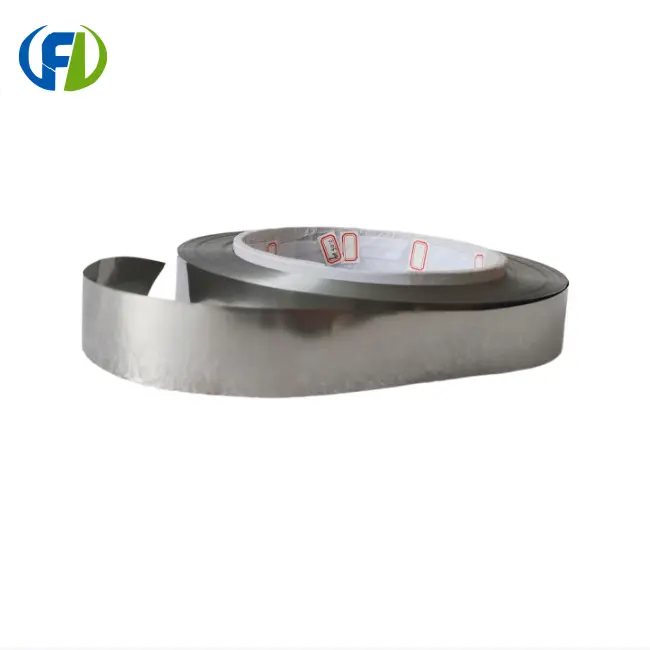Cross-section Values for Different Neutron Energies
The neutron absorption cross-section of a material is a measure of its probability to absorb neutrons of various energies. For zirconium foil, these cross-section values vary depending on the energy of the incoming neutrons, which can be broadly categorized into thermal, epithermal, and fast neutrons.
Thermal Neutron Absorption
Thermal neutrons, with energies typically below 1 eV, are of particular interest in many nuclear reactor designs. Zirconium exhibits a relatively low thermal neutron absorption cross-section, approximately 0.18 barns for natural zirconium. This low value ensures that zirconium components, such as fuel cladding made from zirconium alloys, do not significantly impede the neutron economy within a reactor core.
Epithermal and Fast Neutron Interactions
As neutron energies increase, the absorption cross-section of zirconium generally decreases. For epithermal neutrons (energies between 1 eV and 1 MeV), the cross-section values drop significantly. Fast neutrons, with energies above 1 MeV, have even lower probabilities of being absorbed by zirconium atoms. This energy-dependent behavior makes zirconium an excellent material for applications where neutron transparency across a wide energy spectrum is desired.
The low absorption cross-section across various neutron energies contributes to zirconium's overall neutron economy in reactor systems. This property allows for more efficient use of fuel and helps maintain consistent neutron flux throughout the reactor core, enhancing overall performance and safety.
Comparison to Boron in Nuclear Applications
While zirconium is valued for its low neutron absorption, boron is often used in nuclear applications for the opposite reason – its high neutron absorption cross-section. Comparing these two materials provides insight into their distinct roles in nuclear technology.
Boron's High Neutron Absorption
Boron, particularly its isotope boron-10, has a thermal neutron absorption cross-section of about 3835 barns – over 21,000 times higher than that of natural zirconium. This property makes boron an excellent neutron absorber, commonly used in control rods, neutron shielding, and nuclear instrumentation.
Complementary Roles in Reactor Design
The contrasting neutron absorption properties of zirconium and boron allow them to serve complementary functions in nuclear reactors:
- Zirconium alloys are used for fuel cladding and structural components where low neutron absorption is crucial for maintaining reactor efficiency.
- Boron is utilized in control rods and safety systems where high neutron absorption is necessary for regulating the nuclear reaction and ensuring safe shutdown capabilities.
This synergy between materials with different neutron absorption characteristics enables precise control over reactor operations and enhances overall safety. The low neutron absorption of zirconium foil and zirconium alloys in fuel assemblies allows for efficient neutron utilization, while boron-based components provide the means to quickly adjust reactivity when needed.
How Alloying Affects Neutron Absorption
While pure zirconium has excellent neutron absorption properties, alloying elements are often added to enhance its mechanical and corrosion resistance properties. These additions can influence the overall neutron absorption characteristics of the resulting alloy.
Common Zirconium Alloys in Nuclear Applications
Several zirconium alloys have been developed for use in nuclear reactors, with Zircaloy-2 and Zircaloy-4 being among the most common. These alloys typically contain small amounts of tin, iron, chromium, and nickel (in the case of Zircaloy-2). The specific composition is carefully controlled to maintain low neutron absorption while improving other material properties.
Impact of Alloying Elements
The addition of alloying elements can have various effects on neutron absorption:
- Tin: Generally has a minimal impact on neutron absorption due to its relatively low cross-section.
- Iron and Chromium: These elements can slightly increase neutron absorption, but their concentrations are kept low to minimize this effect.
- Nickel: Has a higher neutron absorption cross-section and is typically eliminated or reduced in newer alloy formulations to improve neutron economy.
Balancing the benefits of alloying with the need to maintain low neutron absorption is a crucial aspect of zirconium alloy development for nuclear applications. Advanced alloys aim to optimize this balance, providing improved mechanical and corrosion properties while minimizing the impact on neutron economy.
Neutron Absorption in Advanced Zirconium Alloys
Ongoing research in zirconium foil development focuses on creating materials with even better neutron absorption characteristics while enhancing other properties. Some approaches include:
- Reducing the concentration of high neutron absorption impurities
- Exploring new alloying elements with lower neutron cross-sections
- Optimizing microstructure to influence neutron interactions
These advancements in alloy design contribute to the continuous improvement of nuclear reactor efficiency and safety, leveraging the unique properties of zirconium-based materials.
Conclusion
The neutron absorption properties of zirconium foil and zirconium alloys play a pivotal role in nuclear technology, enabling efficient and safe reactor designs. By understanding and optimizing these properties, engineers and scientists continue to push the boundaries of nuclear energy production and related applications.
For those seeking high-quality zirconium products for nuclear or other advanced applications, Baoji Freelong New Material Technology Development Co., Ltd. stands as a leading provider. Located in Baoji City, China's Titanium Valley, we specialize in the production and export of zirconium, titanium, nickel, niobium, tantalum, and various alloys. Our commitment to quality and service has earned us the trust of clients across Australia, Korea, Germany, the US, UK, Malaysia, Middle East, Taiwan, and beyond.
To learn more about our zirconium foil products and how they can meet your specific needs, please don't hesitate to contact us at jenny@bjfreelong.com. Our team of experts is ready to assist you in finding the perfect solution for your application, ensuring that you receive materials that match or exceed your quality requirements.
References
1. Olander, D., & Motta, A. (2009). Light Water Reactor Materials. American Nuclear Society.
2. Zinkle, S. J., & Was, G. S. (2013). Materials challenges in nuclear energy. Acta Materialia, 61(3), 735-758.
3. Kuznetsov, V., & Sekimoto, H. (2017). Neutron Cross-Section Libraries for Nuclear Applications. Springer.
4. Cox, B. (2005). Some thoughts on the mechanisms of in-reactor corrosion of zirconium alloys. Journal of Nuclear Materials, 336(2-3), 331-368.
5. Yamamoto, Y., & Takagi, I. (2019). Development of Zirconium Alloys for High Burnup Fuel Applications. Nuclear Engineering and Technology, 51(4), 1006-1016.
6. Murty, K. L., & Charit, I. (2013). Texture development and anisotropic deformation of zircaloys. Progress in Nuclear Energy, 48(4), 325-359.


_1744787837119.webp)
_1744595342294.webp)
_1745218074088.webp)
_1747986035507.webp)